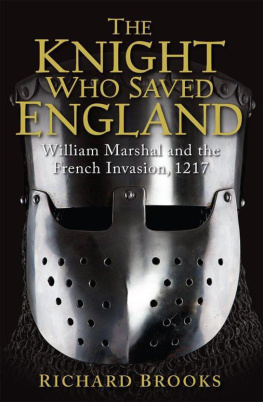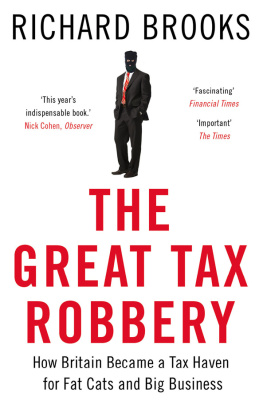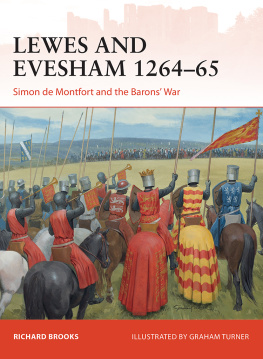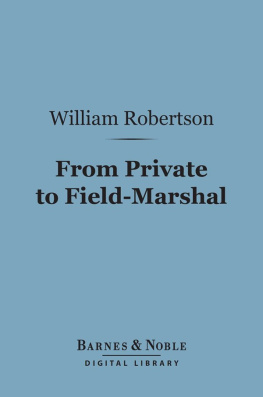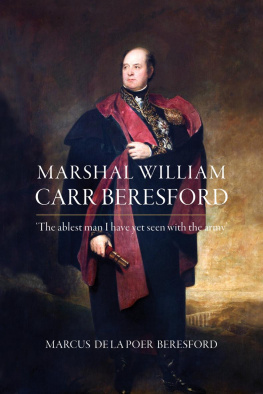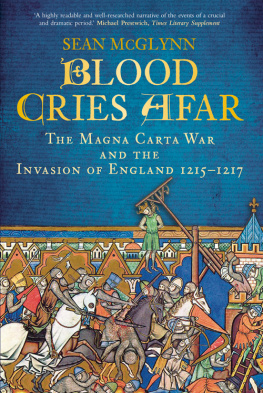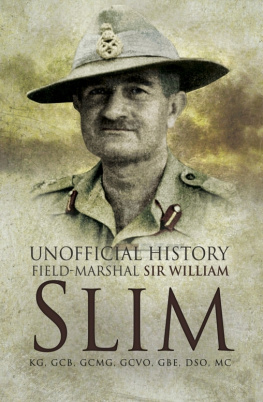THE
KNIGHT
WHO SAVED
ENGLAND
William Marshal and the French Invasion, 1217
R ICHARD B ROOKS
CONTENTS
LIST OF ILLUSTRATIONS
P LATE S ECTION
Closely formed conrois of knights pursue fleeing opponents with lances couched for maximum impact. (M.736 f7v Life of St Edmund, twelfth century. New York, The Pierpont Morgan Library. 2013. Photo Pierpont Morgan Library/Art Resource/Scala, Florence)
The Young Kings effigy at Rouen cathedral. The inscription reads:
Whose brother was called the Lion Heart
Henry the Younger sought a place in Normandy by right of arms
In the year 1183 cruel death took him hence
(Authors photo)
Effigy of Richard I in Rouen cathedral: only Richards heart is at Rouen; his body was buried at Fontevraud beside his parents. (Authors photo)
The keep and ruined inner ward of King Richards saucy castle at Chteau Gaillard, perched high above the River Seine. (Authors photo)
One of King Johns favourite objects, a denier or silver penny. (Authors photo; original coin courtesy of Mark Wingham)
The overgrown ruins of Tancarville Castle where William lived as a squire. (Photo courtesy of Marcel Barbotte and Les Amis du Chteau de Tancarville)
A nineteenth-century impression of a Crusaders first sight of Jerusalem. (Postcard in authors collection)
Chepstow Castle on the River Wye in the early twentieth century. (Postcard in authors collection)
The Marshals Tower at Chepstow Castle, seen from the barbican. (Authors photo)
Williams castle at Kilkenny converted into an eighteenth-century Irish Ascendancy mansion. (Postcard in authors collection)
The murder of Thomas Becket in 1170, after a thirteenth century image. (Authors collection)
Twelfth-century blacksmiths forging the tools of war, including a rare representation of horse armour. (MS 0.9.34 f24r, by kind permission of the Master and Fellows of Trinity College Cambridge)
No longbowmen are recorded fighting at either battle of Lincoln, but one appears amidst the decoration of the cathedrals western porch, a reminder of their ubiquity in English society. (Authors photo)
Rochester Castle from the side attacked by King John, engraved in the eighteenth century. (Postcard in authors collection)
Dover Castle from the east showing the depth of the fortified area: the French attacked from right to left. (Postcard in authors collection)
King Sauls battle with the Amalekites from a French Old Testament c.1250: knights and sergeants lead off bound prisoners, driving sheep and cattle before them. (M638 f24v New York, The Pierpont Morgan Library. 2013. Photo Pierpont Morgan Library/Art Resource/Scala, Florence)
Newark Castle, the scene of King Johns death and the Marshals last military enterprise. (Authors photo)
Goodrich Castle was in the front line of the Welsh uprising of 121517. (Authors photo)
Joshuas Conquest of Ai showing all the horrors of a medieval siege. (M638 f10v New York, The Pierpont Morgan Library. 2013. Photo Pierpont Morgan Library/Art Resource/Scala, Florence)
The Bishop of Winchesters Wolvesey Castle. Both the structures seen here were built during the reign of King Stephen. (Authors photo)
Lincoln from the south-west in the eighteenth century, hardly altered since the Middle Ages. (Image courtesy of The Collection: Art and Archaeology in Lincolnshire (Usher Gallery, Lincoln))
One of the fine medieval townhouses attributed to Lincolns thirteenth-century Jewish community perched on the aptly named Steep Hill. (Authors photo)
Lincoln Castle and Cathedral in the twelfth century, showing the formers West Gate entered by Peter des Roches and Fawkes of Braut during the battles opening moves. (Drawing by David Vale; courtesy of the Society for Lincolnshire History and Archaeology and the Usher Gallery)
Lincolns northern gate at Newport Arch, the last Roman gate in England still in use for traffic. (Authors photo)
The West Gate of Lincoln Castle retains its original box-like structure, beyond the modern bridge. (Authors photo)
The exterior of the Lucy Tower after an eighteenth-century sketch made before housing blocked the view. (Original watercolour courtesy of Eileen Brooks)
Lincoln Castles East Gate through which Fawkes attacked the Franco-rebel knights on Castle Hill. (Authors photo)
Castle Hill, the scene of the main action viewed from the castle walls: Fawkes sortied bottom left, to be joined by William from Bailgate. (Authors photo)
The Siege of Lincoln as imagined by Matthew Paris: a crossbowman directs a parting shot at fleeing rebels, while the Angevin leopards fly over an expiring Count de la Perche. (MS 16 55v, by kind permission of the Master and Fellows of Corpus Christi College Cambridge)
The probable site of the rebels attempt to rally at the junction of Steep Hill and Christs Hospital Terrace. (Authors photo)
A modern impression of the East Bargate after an eighteenth-century sketch. (Original watercolour courtesy of Eileen Brooks)
The quay at Sandwich was still in commercial use at the turn of the twentieth century. This would have been the nearest point for William to have observed the progress of the battle. (Courtesy of Sandwich Museum)
The River Stours winding course today, looking back towards Sandwich: in the Middle Ages these reed beds were open sea. (Authors photo)
A medieval boarding action pictured by Matthew Paris, resulting in wholesale slaughter of the losers: missile weapons include a staff-sling and longbow projecting a jar of some unspecified substance. (MS 16 56v, by kind permission of the Master and Fellows of Corpus Christi College Cambridge)
An early twentieth-century reconstruction of the capture of a French vessel by Henry IIIs great ship the Queen in the Bay of Biscay in 1225. (Authors collection)
The chapel at St Bartholomews Hospital: material evidence for the battles location off Sandwich. (Authors photo)
The circular nave of the Temple Church was inspired by the Church of the Holy Sepulchre in Jerusalem that William visited in the 1180s. Henry III added the Gothic chancel in the 1240s. (Authors photo)
Inside the Temple Church: Williams effigy lies nearest the font accompanied by his sons William and Gilbert on his left and at his feet respectively. (Photo by Christopher Christodoulou; courtesy of the Temple Church)
Williams sorely damaged effigy suffered worse injuries during the Blitz than the Marshal ever did in his lifetime. (Authors photo)
The Flower of Chivalry: part of a modern tapestry celebrating the Marshals part in the foundation of New Ross in Leinster. (Reproduced by kind permission of The Ros Tapestry Project Ltd. The Ros Tapestry Project Ltd)
PREFACE
W illiam Marshal, Earl of Pembroke and Striguil, was a survivor. Born in the 1140s, he witnessed the loss of Normandy under King John, and set his seal to Magna Carta in 1215. Having served four kings, he became regent on the death of King John, and ruled England until his own death in 1219. At an age when most men of his day were long dead, he won two of the most important battles of the Middle Ages to confirm Englands separation from Europe and preserve Magna Cartas revolutionary guarantees of personal freedom. Younger son of a minor baron distinguished chiefly for his brutal opportunism, William had gained celebrity on the tournament field, coming to symbolise the knightly qualities of prowess, loyalty, and wisdom. Time has laid his memory waste, but traces remain: ruined castles either side of the Channel; references in chronicles and government records; the Statute Books most ancient clauses; a battered effigy in the City of London. Most illuminating of all, the epic History of William Marshal survived six centuries of oblivion to provide an unparalleled portrait of the life of a feudal magnate. Its survival is typical of the Marshals good fortune. Without it none of the modern studies of Williams life could have been written; our understanding of his contribution to a crucial period of English history would be sadly diminished.
Next page
